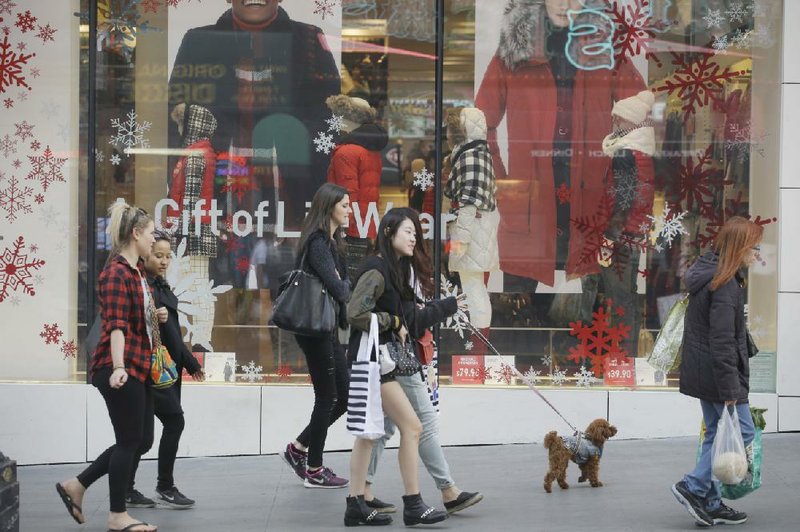WASHINGTON -- Consumer spending posted a modest increase for a second straight month in October, while personal income rebounded after a sluggish September.
Spending edged up 0.1 percent after a similar tiny gain in September, the Commerce Department reported Wednesday.
Incomes jumped 0.4 percent, double the rise in September. Wages and salaries climbed 0.6 percent. That was the strongest wage gain in five months and a reflection of the big surge in hiring that occurred last month.
The second straight month of spending weakness could signal trouble, given that consumer spending accounts for 70 percent of economic activity. However, economists are counting on the strong labor market to bolster the incomes needed to fuel spending in the months ahead.
"People are still a little bit worried that the economy is not back up to full health," said Russell Price, senior economist at Ameriprise Financial Inc. in Detroit. "Job growth improved clearly in the month of October, and we're seeing better wages and salaries. That should fall to the bottom line and certainly will be positive for consumers' spending ability. They, of course, have to have the confidence to be able to spend, and that still remains kind of shaky."
In October, spending on durable goods such as cars was flat after a 0.5 percent rise in September. Spending on nondurable goods such as food and clothing edged up 0.1 percent after a 1.1 percent drop the previous month, which in part reflected falling gasoline prices.
Spending on services such as haircuts and auto repairs rose 0.1 percent after bigger gains of 0.4 percent in August and September.
With the growth in incomes and a small rise in spending, the saving rate rose to 5.6 percent of after-tax income in October, up from 5.3 percent in September. It was the highest monthly savings level in nearly three years.
Paul Ashworth, chief U.S. economist at Capital Economics, said Friday's data showed a "muted start" to the fourth quarter. But he described the rise in the savings rate as encouraging because it means that households will have money to spend on Christmas.
"Even if labor market conditions weakened, that leaves plenty of scope for some solid gains in consumption over the holiday season," Ashworth said.
The strong gain in wages and salaries came in a month when employers added 271,000 jobs, the biggest monthly increase this year. The strong job growth pushed the unemployment rate down to a seven-year low of 5 percent.
The number of people seeking U.S. unemployment aid dropped sharply last week, the Labor Department said Wednesday.
Weekly applications for unemployment benefits dropped 12,000 last week to a seasonally adjusted 260,000. That is not far from the four-decade low of 255,000 reached in July. The four-week average, a less volatile measure, was unchanged at 271,000.
The number of people that are receiving benefits rose 34,000 to 2.2 million.
A third economic report released Wednesday said Americans were more optimistic about their incomes and personal finances this month, particularly among lower and middle-class households, lifting consumers' outlook.
The University of Michigan's consumer sentiment index, released Wednesday, rose to 91.3 in November from 90 in the previous month. That is close to the average for the past six months of 91.6.
Steady hiring and rising wages and salaries are slowly lifting Americans' confidence in the economy, although it remains muted by historical standards. The modest increase suggests consumers could spend more over the coming Christmas shopping period.
Among lower and middle-income households, 38 percent expect their personal finances to improve in the coming year, compared with just 29 percent of higher-income households. The outlook for wealthier families appears to have been tempered by recent swings in the stock market.
The report included some cautionary signs for retailers: Consumers at all income levels appear intensely focused on discounts and bargains.
"The insistence of consumers on discounts in prices has rarely been greater in the more than half-century history of the surveys," Richard Curtin, chief economist of the survey, said. The data "indicate the indelible impact that the [recession] has had in making consumers more cautious spenders."
Information for this article was contributed by Martin Crutsinger and Christopher S. Rugaber of The Associated Press and by Michelle Jamrisko of Bloomberg News.
Business on 11/26/2015

